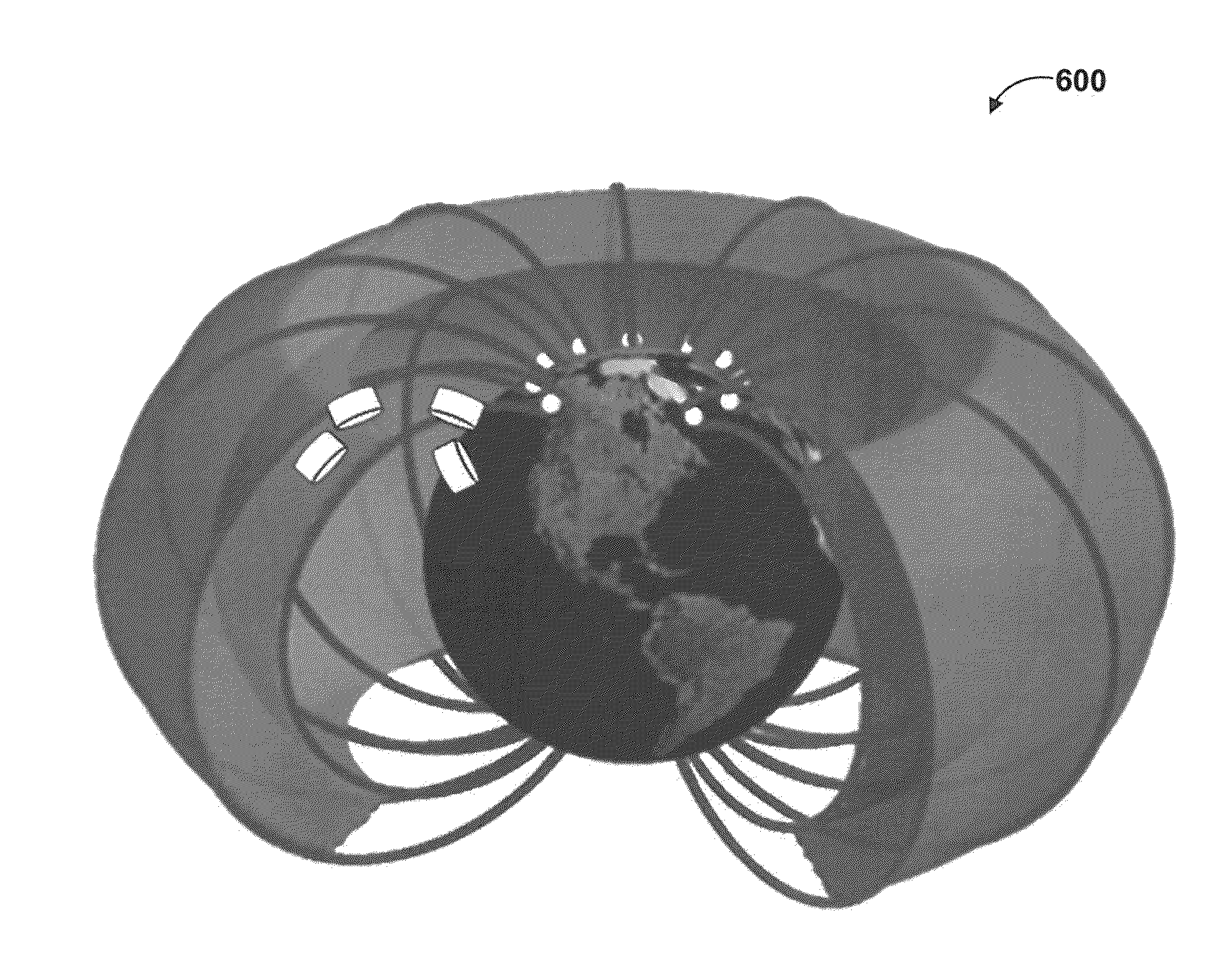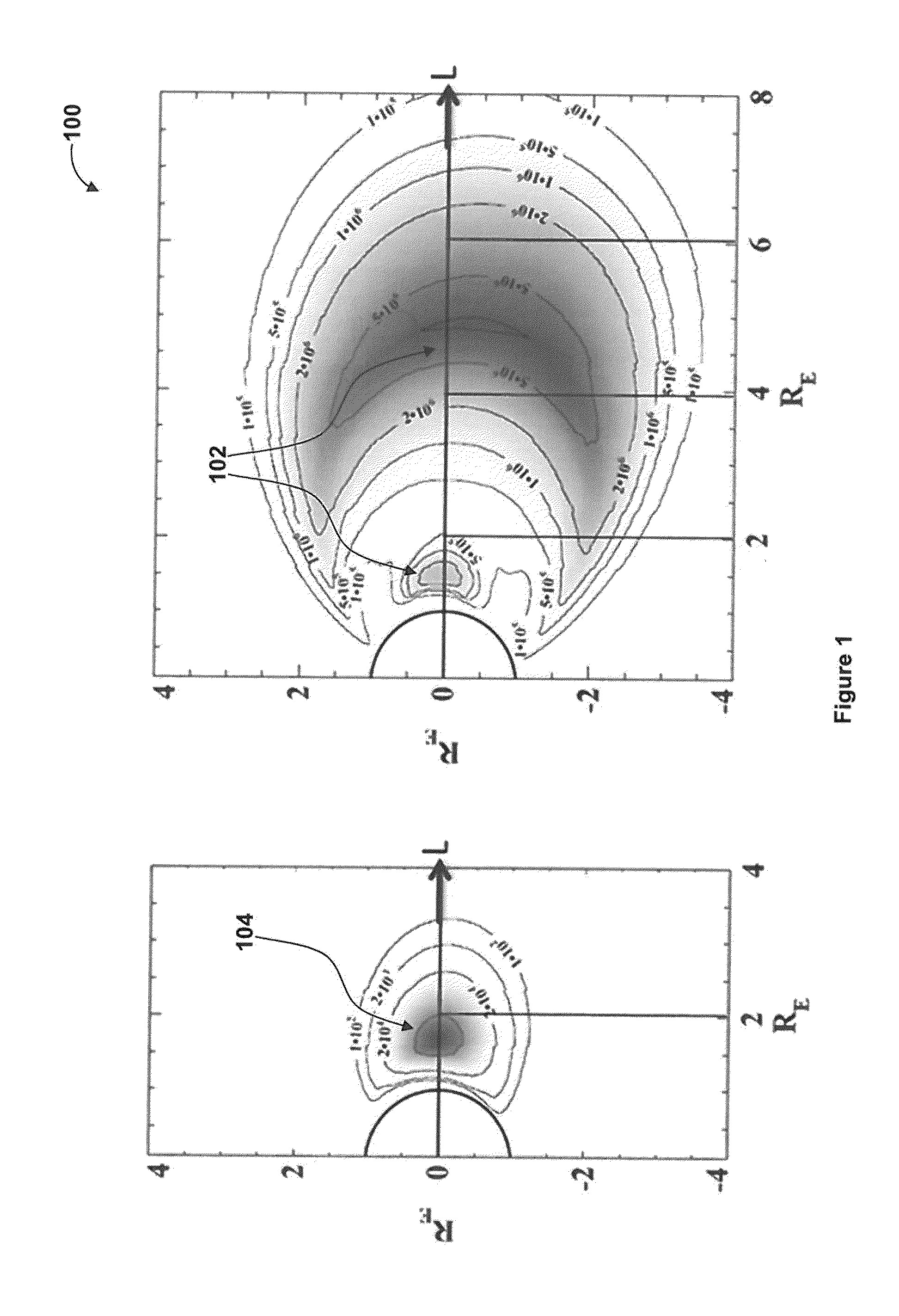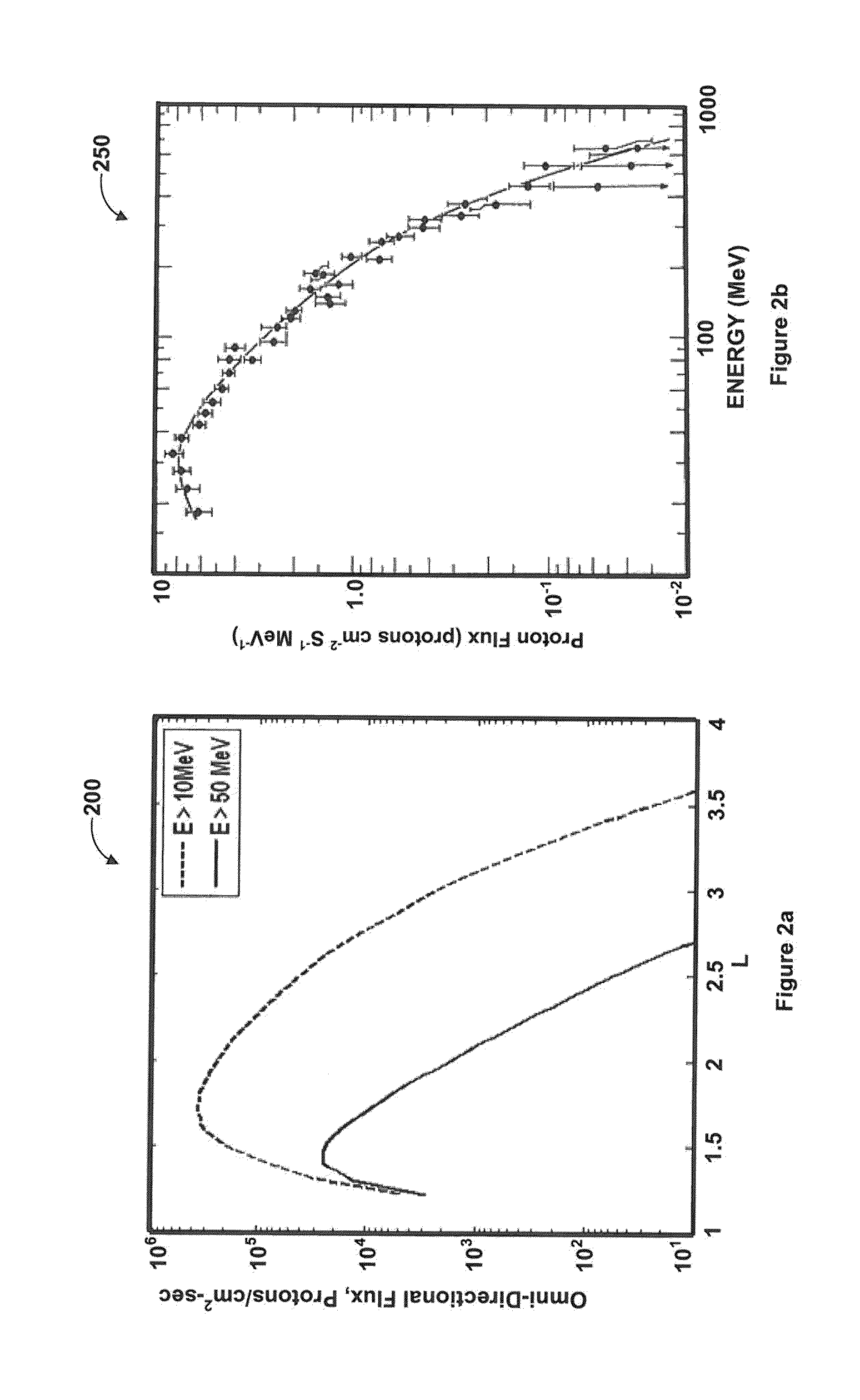System and method for reducing trapped energetic proton or energetic electron flux at low earth orbits
a technology of energetic proton and electron flux, which is applied in the field of radiation protection, can solve the problems of system failure, inability to function, and essentially impractical hardening against such high-energy protons, and achieve the effects of reducing energy electron flux enhancement, reducing energetic proton flux, and reducing energy proton flux trapped in the inner radiation bel
- Summary
- Abstract
- Description
- Claims
- Application Information
AI Technical Summary
Benefits of technology
Problems solved by technology
Method used
Image
Examples
Embodiment Construction
[0040]The particular values and configurations discussed in these non-limiting examples can be varied and are cited merely to illustrate at least one embodiment and are not intended to limit the scope thereof.
1. The Structure of the Radiation Belts
[0041]Radiation Belts (RB), also known as Van-Allen belts, are the locus of energetic electron and protons trapped by the Earth's magnetic field. It is customary and convenient to describe a given magnetic field line by its L value. The L value corresponds to the radial location of its intersection with the magnetic equator in units of Earth radius (RE). FIG. 1 illustrates a schematic, diagram of the proton and electron RB structure as a function of L shell. The intensity of a proton radiation belt 104 is confined inside the L=2 value. Contrary to this, the electron radiation belts 102 have two peaks one inside L=2 and another between L=4 and L=5, separated by a gap between L=2 and L=3. It is customary to label regions with L3 as the outer...
PUM
 Login to View More
Login to View More Abstract
Description
Claims
Application Information
 Login to View More
Login to View More - R&D
- Intellectual Property
- Life Sciences
- Materials
- Tech Scout
- Unparalleled Data Quality
- Higher Quality Content
- 60% Fewer Hallucinations
Browse by: Latest US Patents, China's latest patents, Technical Efficacy Thesaurus, Application Domain, Technology Topic, Popular Technical Reports.
© 2025 PatSnap. All rights reserved.Legal|Privacy policy|Modern Slavery Act Transparency Statement|Sitemap|About US| Contact US: help@patsnap.com



